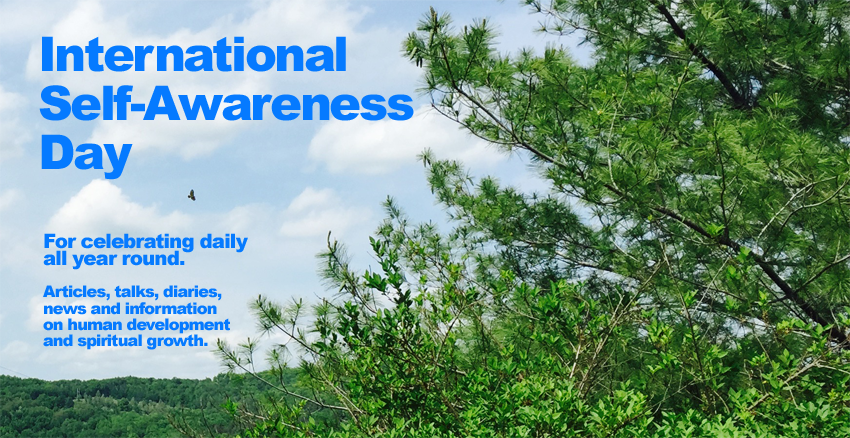Now, after a whole year of reviewing the
Virtues in their positive attributes and their opposites, the Senses and the
Gothic “I”, and quite a few articles and extras, I’m ready for more… Are you?
Here’s a quick review of Edward’s mindset, written on 6 October 2016.
Working hypothesis 06.10.16:
Mind: There is this sensation of “me”
which I call my “Self-Awareness”, and that is what drives this search, part of
a “Life Plan” to delve within the mind, considering that we live in our minds,
and we don’t even look into them properly, and accept all kinds of theories and
words from others. That is a great mistake. This “Self-Awareness” is so “me”
that it just happens, or works (or doesn’t work), and there is no getting
behind it to observe it. It is just observing and experiencing. So as I sit
still with eyes closed, there is darkness, and I reject all swirling lights and
clouds and stars and black holes and retinal images and other things, and
insist on an answer to “Who am I?”, “What is the origin of this I-thought?”. It
takes great but silent effort to do this.
Body: The workings of the body are
noted: heartbeat, breathing, perhaps some stomach gas or a sensation of
fullness or emptiness, or a slight hunger pang, a discomfort here or there
(normally due to yoga, or stretching, etc.).
Feelings: The “feelings”, if any, do come occasionally,
are noted, like excitement, calmness (serenity), delight, joy, satisfaction, interest,
pleasure, surprise (amazement), longing (for an answer)… There are residual
feelings of a “negative” nature that are detected occasionally, but usually
caught and seen immediately, and not reacted to.
Thinking: The “thought
process” is noted. It comes unexpectedly, a thought pops up, and the
realisation that there are thoughts is noted. During practises, they are forthwith
rejected, as it is not time for thinking during such sessions. An “idea” may
occur, and it is noted and usually remembered for later writing (as in this
very case). But usually thinking is quiet, as there are only two thoughts of
importance in these sessions: WAI on the in-breath and WIG on the out-breath.
WAI is of course Who Am I?, and WIG is an attempt to connect to a higher source
and put things in perspective by referring to Where is God?, or Where is the
Creator?, meaning how did all this come about?
Dreaming: The “dream
process” is noted. As “Awareness” wavers, or “sleep” oppresses, what I call
“dream images” and “thought trains” occur, and one can drift off into these.
But usually “Awareness” returns and a renewed effort is made to reject the dream
image or thought process, and breathing or breath-retention is
used to come back to WAI-WIG only, or greater concentration on the “inner
sound” that is always there.
Blackness: All else is
black. There is nothing there. It’s a black wall. If drifting occurs, it may
look interesting, but one can see an underlying dreaming process that could be
called some kind of “subconsciousness”, but little importance is given to this
– it may all be dreams, and we must have clear-cut reality. Unless something is
very, very clear and explicit, it is rejected.
Visions: Very occasionally, reported in
diaries, images seem to come from a “different place” – one is wide awake and
attentive inside, with no sensation of sleepiness, and suddenly a clear
photographic image occurs. This does not come from the underlying dreaming
process in my present opinion. I reserve any opinion about this and must wait
and see.
“Intelligence”: Underpinning
all functions is an innate “intelligence” in the sense of an ordering,
application and use of energy to keep all instinctive processes working. Heart,
blood, lymph, cellular functions, digestion, elimination, breathing and the
stuff of mind – thinking, feeling, sensing – all intelligently cooperate to
keep this LIFE going. This is inferred by the mind as it contemplates life
operations.
Other words: The things lots
of people “talk about”, and even write about (as I sometimes do!), like the
“I”, the “soul”, the “spirit”, the energy body, the mental body, the “higher
self”, the pain body, the subconscious, the unconscious, the ego (or id or
superego or whatever), the personality, even the “self”, are all just words
and do not correspond to anything I can see in my mind. My opinion on these terms
is reserved for later. If anybody uses them, they have to define them in their
own experience. So far, there seems to be no more in the Mind than what I have
described above, and when other words are used, they must always be questioned.
That is the current state of affairs in
Edward Wells’ mind. Two years ago, there were many more words, thoughts
and feelings, but I had no idea what they really signified. Today, calm
perseverance has so far served me well. I hope this Diary has also been good for you to some extent.


















